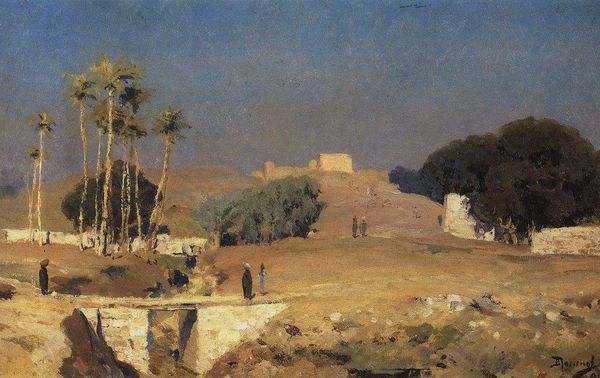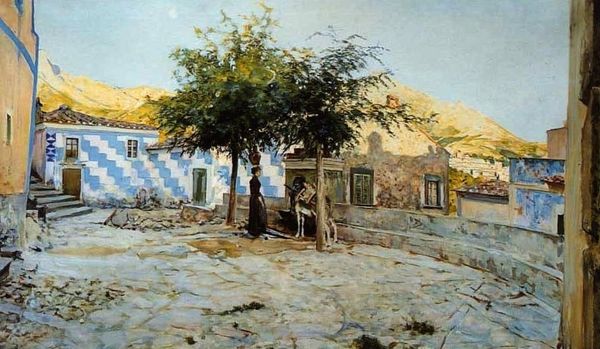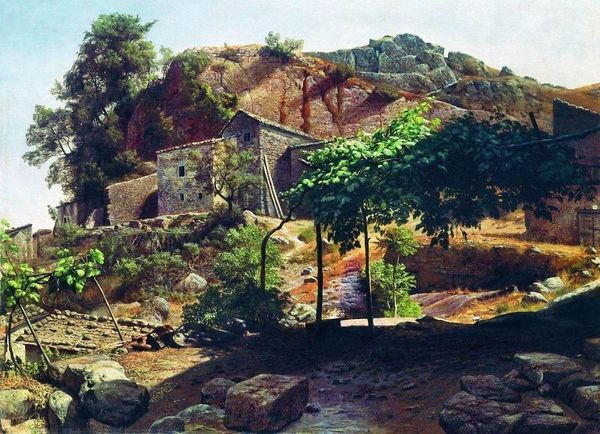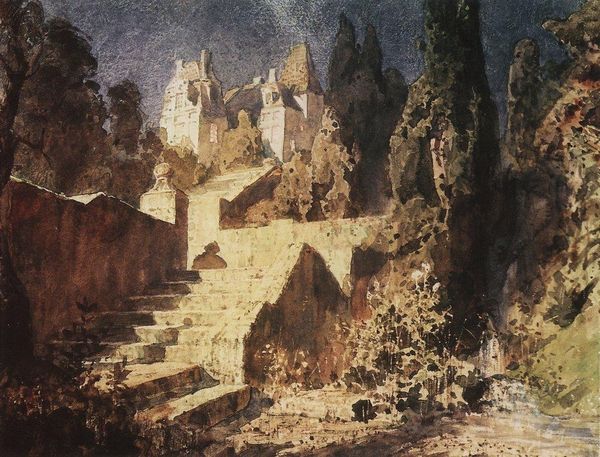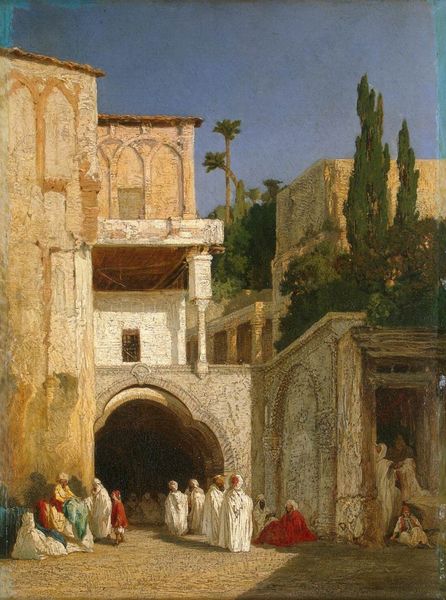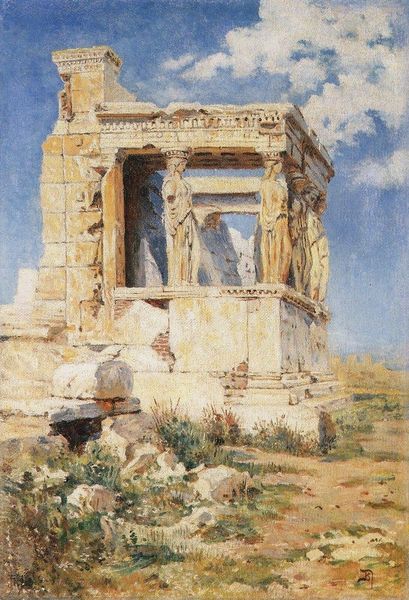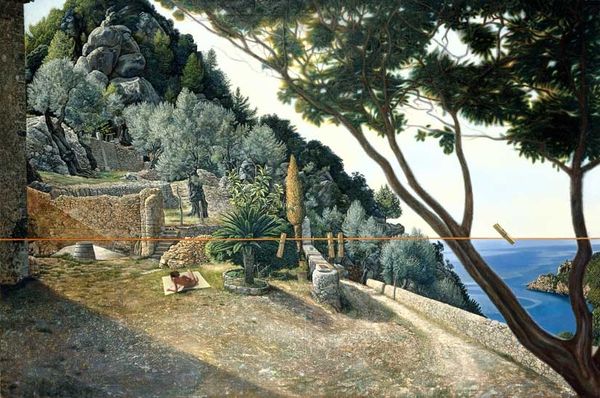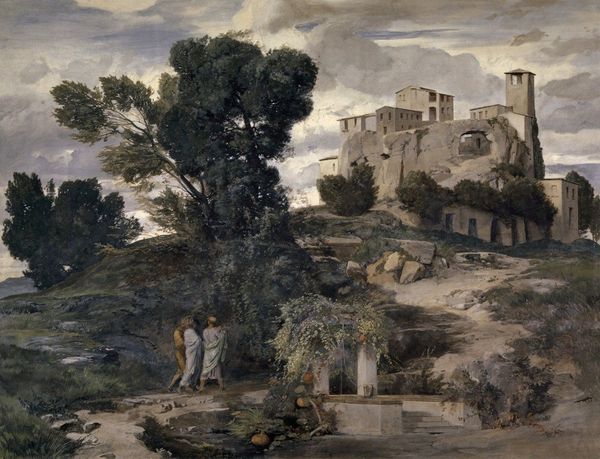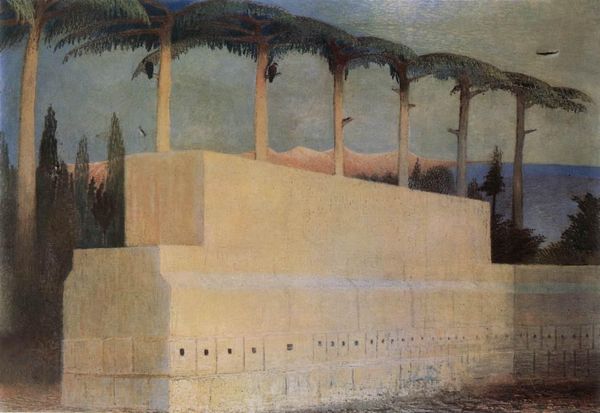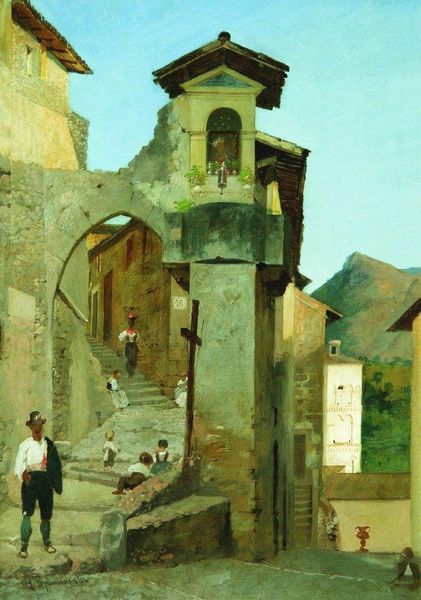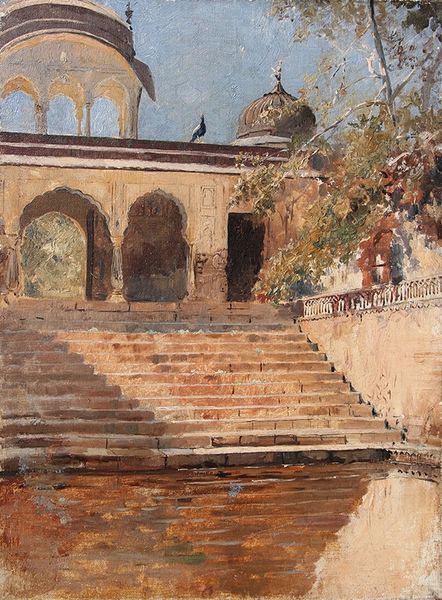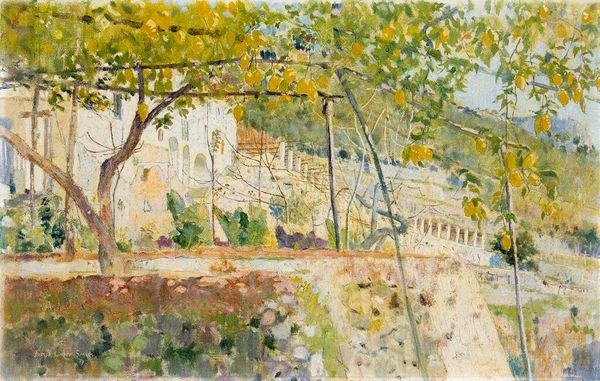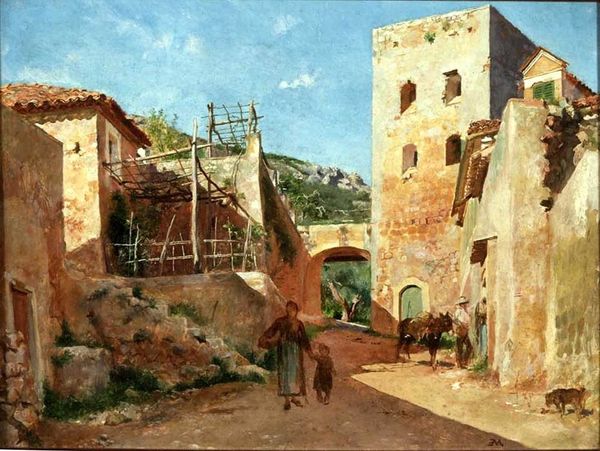
painting, oil-paint
#
urban landscape
#
painting
#
oil-paint
#
landscape
#
oil painting
#
orientalism
#
cityscape
#
realism
#
building
Copyright: Public domain
Editor: This is Vasily Polenov's "The Mosque of Omar. Haram el-Sharif," painted in 1882 using oil. The palette seems very subdued. The details in the stonework leading to the Mosque appear softened, creating almost a hazy effect. What do you see as the most compelling aspects of its visual composition? Curator: Note the composition's careful arrangement of forms and tonalities, independent of its subject. The gradations of light across the stone create subtle shifts in texture, do they not? Consider how Polenov establishes a visual rhythm, drawing your eye upward via the interplay of verticals—the slender trees—and horizontals present in the terraced stairs. Editor: Yes, I see what you mean about the visual rhythm, but I am not certain about ignoring the subject matter. Isn't the site important to this piece? Curator: The painting's true merit lies in the mastery of its pictorial structure. Reflect on the architectural space formed less by the rendering of the mosque itself but more emphatically rendered by the pattern of solids and voids, light and shadow. These pictorial components create depth and establish spatial relationships without direct dependence on context. Consider this his focus. Editor: So you are saying the "what" is not as relevant as the "how?" It is an interesting concept to apply to this piece. Thank you. Curator: Indeed. Analyzing the work using a formal lens brings an appreciation based solely on Polenov’s handling of compositional tools. It refines our visual perception itself.
Comments
No comments
Be the first to comment and join the conversation on the ultimate creative platform.
